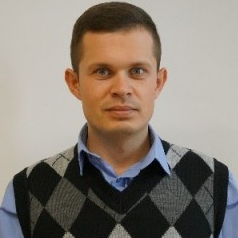Heat Transfer and Energy Harvesting in Fluid System
A special issue of Machines (ISSN 2075-1702). This special issue belongs to the section "Electromechanical Energy Conversion Systems".
Deadline for manuscript submissions: closed (31 December 2023) | Viewed by 12658
Special Issue Editors
Interests: hydrodynamics; thermohydraulics of two-phase flow (water or mercury)
Interests: differential equations of transport phenomena; non-Newtonian fluid flows; numerical and analytic solutions
Special Issues, Collections and Topics in MDPI journals
Special Issue Information
Dear Colleagues,
For this Special Issue of Machines we are seeking studies which present analytic solutions to any kind of hydrodynamic or heat flow equations. The investigation and knowledge of such equations are extremely important for planning and building of water machines, e.g., turbines for heat engines, internal combustion engines or even choosing the proper shape of airplanes of ships. On the other hand, the mathematical structure of equation systems capable of decribing such processes are very complex. Nowadays, multi-physics engineering software can handle compound heat and flow conduction problems numerically up to a given level of accuracy. On the other hand, due to our human existence there is a natural need to understand and grasp the essence of physical processes, ratios, trends, magnitudes or at least the asymptotic runouts of these complicated calculations. The search for new solutions to these equations is an evergreen and fascinating intellectual topic. We hope that the reader will enjoy this intellectual tour through interesting problems and will help us to learn new paradigms which will be successfully applicable in her/his scientific career.
Dr. Imre Ferenc Barna
Dr. Krisztian Hriczo
Guest Editors
Manuscript Submission Information
Manuscripts should be submitted online at www.mdpi.com by registering and logging in to this website. Once you are registered, click here to go to the submission form. Manuscripts can be submitted until the deadline. All submissions that pass pre-check are peer-reviewed. Accepted papers will be published continuously in the journal (as soon as accepted) and will be listed together on the special issue website. Research articles, review articles as well as short communications are invited. For planned papers, a title and short abstract (about 100 words) can be sent to the Editorial Office for announcement on this website.
Submitted manuscripts should not have been published previously, nor be under consideration for publication elsewhere (except conference proceedings papers). All manuscripts are thoroughly refereed through a single-blind peer-review process. A guide for authors and other relevant information for submission of manuscripts is available on the Instructions for Authors page. Machines is an international peer-reviewed open access monthly journal published by MDPI.
Please visit the Instructions for Authors page before submitting a manuscript. The Article Processing Charge (APC) for publication in this open access journal is 2400 CHF (Swiss Francs). Submitted papers should be well formatted and use good English. Authors may use MDPI's English editing service prior to publication or during author revisions.






